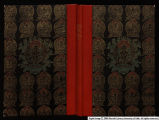| Title |
Papermaking in Indo-China |
| Call Number |
TS1095.I55 H8 1947; Record ID 9911630960102001 |
| Date |
1947 |
| Creator |
Hunter, Dard, 1883-1966 |
| Publisher |
Chillicothe, Ohio, Mountain House Press 1947. |
| Subject |
Papermaking |
| Contributors |
Mountain House Press. |
| Type |
Text |
| Format |
image/jpeg |
| Identifier |
TS1095.I55 H8 1947 |
| Source |
Original book: Papermaking in Indo-China |
| Language |
eng |
| Relation |
Is part of the Dard Hunter Collection, Marriott Library, University of Utah |
| Collection Name |
Rare Books Collection |
| Holding Institution |
Rare Books Division, Special Collections, J. Willard Marriott Library, University of Utah |
| Rights |
 |
| ARK |
ark:/87278/s6cv4h1q |
| Setname |
uum_rbc |
| ID |
122736 |
| Reference URL |
https://collections.lib.utah.edu/ark:/87278/s6cv4h1q |

































































































